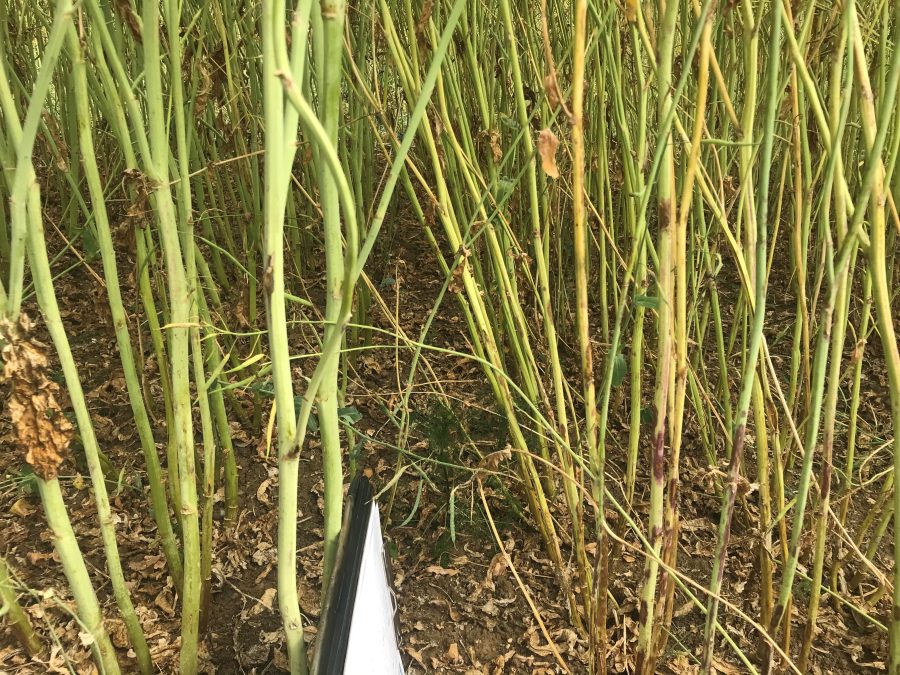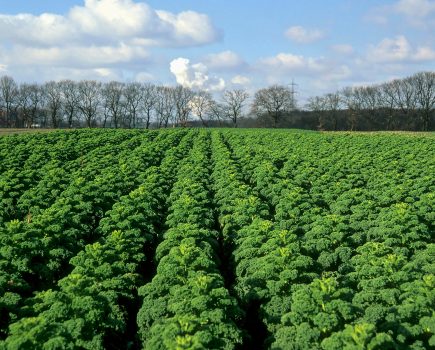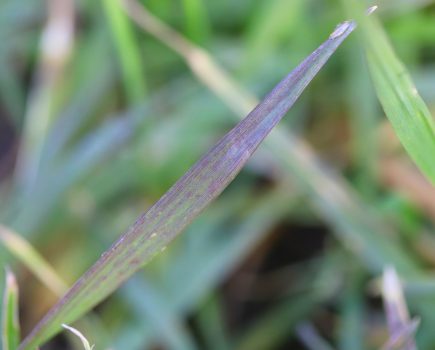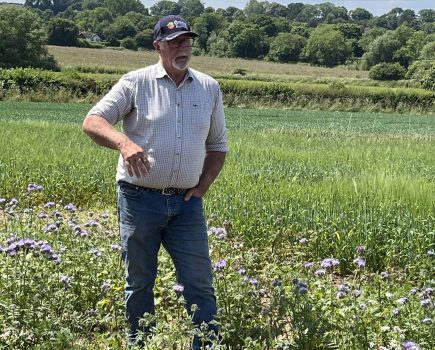This year for the first year there are Verticillium resistant ratings included in the AHDB Recommended List for oilseed rape. The top conventional variety on this list, Pinnacle has an intermediate resistance rating for Verticillium stem stripe. “Those varieties with higher ratings have been assessed for a longer period of years, hence more data has been available. I would fully expect Pinnacle to rise up to the MR or moderately resistant rating in the future,” says the breeder of this variety, Mike Pickford.
Verticillium was first found in England in 2007 when it was called Verticillium wilt. Last year it was renamed Verticillium stripe to fit more accurately with the symptoms that are seen. ”As a disease,It tends to be sporadic but has hotspots such as Cambridgeshire and the East but has been reported in other oilseed rape growing areas of Lincolnshire and Herefordshire.”
“In the field you start by seeing premature ripening which gets more obvious as the crop matures. Verticillium affects the whole of the plant architecture, showing as yellow or brown discolouration on the stem surface, and if you peel back the epidermis of the stem you will see grey vertical stripes running through the stem tissue, which is the infection found in the xylem or water conducting parts of the stem. As the crop senesces, these grey vertical stripes will form tiny black dots called microsclerotia, which can be seen using a hand lens, and will return verticillium infection back into the soil, “explains Neil Groom, general manager for Grainseeds.
Neil explains that “In extreme conditions Verticillium stripe can cause up to 34% yield reduction and being a soil-borne disease, it will be building up in the soil each year. There is no chemical treatment available. Plant pathologists say that the only way to minimise this disease is to extend your rotations or grow varieties with known resistance.
Because the microsclerotia can survive in the soil for 10 years, the rotation needs to be ten years, This strategy is unworkable and impractical, so growers who have experienced the problem only have resistant varieties to fall back on.”
For years, differences in varietal resistance have been observed between rape varieties in the field by breeders. Neil reports that “in one Grainseed trial on a known disease site in Cambridgeshire, the susceptible varieties were scoring a high 70 Index which means 70% of the plants were dead from verticillium. On the more tolerant varieties we were seeing much lower scores of 20.”
Niel explains that AHDB trials have been running for four years. ADAS has been doing so for ten years on sites with a history of Verticillium stripe. “It was not possible to base the varietal resistance on the usual 1-9 rating, because of insufficient data differentiation. So, the AHDB decided to split Verticillium resistance into three categories – Moderate resistant (MR). Intermediate (I) and susceptible (S). Pinnacle is currently categorised in the Intermediate category at the moment, but this may be a result of the number of years data it has.”
“In trials Pinnacle looks very clean and is free from Verticilliium. More Importantly, data on Verticillium resistance shows Pinnacle to be as good as the variety Catana which is recognised as the resistant control variety. Pinnacle is a clean variety and growers will notice its greener stems at harvest. This helps the plants keep photosynthesising and building yield and results in very large seed at harvest,” explains Mike Pickford.
“There is no other option of minimising Verticillium other than growing a resistant variety,” says Neil. Grainseed oilseed rape varieties such as Pinnacle have proven resistance to verticillium, following several years’ independent trials and commercial experience.
Growing a variety with strong all-round disease resistance can save money, but variety selection is made prior to drilling. “Once the crop is in the ground, there is nothing else you can do to control verticillium,” says Neil. “Working with plant breeder Mike Pickford, we have been focussing on breeding clean varieties for the UK to enable growers to reduce inputs, reduce risk of weather delays in fungicide application and improve genetic resistance.”
Pictured: The crop to the left has good resistance whilst the one on the right shows Verticillium wilt symptoms. As there is still no chemical approved ah against this disease, varieties are the only way forward.







